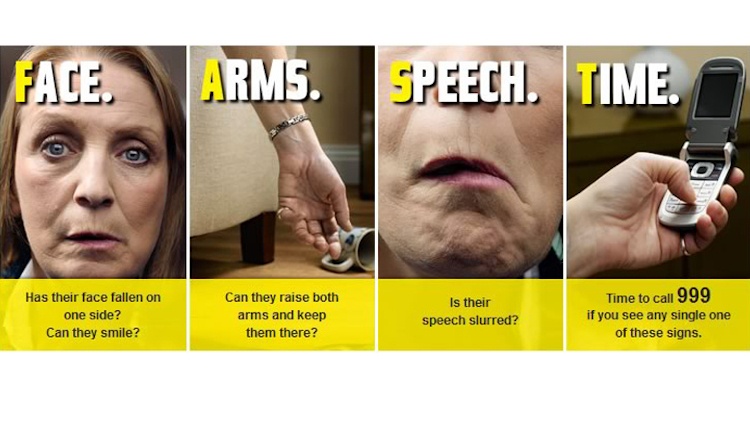
FAST, the simple protocol for stroke prevention to help patients and relatives
Stroke is a life-threatening disease which is very frequent and much underestimated. However, there is a simple and quick method to recognize it. FAST is the most efficient stroke prevention way.
Stroke prevention and diagnosis: what is FAST?
In order to recognize the stroke, you have to know the FAST test. FAST is an easy way to recognise and remember the most common signs of stroke. You have to consider 4 aspects, and if you or a person you know shows these problems, you have to dial your local or national emergency number immediately. Stroke is a life-threatening condition.
As the Australian Government Department of Health reports (link at the end of the article, FAST stands for:
- Face — the face may have dropped on one side, the person may not be able to smile or their mouth or eye may have drooped;
- Arms — the person may not be able to lift one or both arms and keep them there because of arm weakness or numbness;
- Speech — their speech may be slurred or garbled, or the person may not be able to talk at all despite appearing to be awake;
- Time — it is time to call emergency number immediately if you see any of these signs or symptoms.
FAST and stroke prevention: other stroke symptoms
We must not confuse a stroke with a cardiac arrest. A stroke happens when the supply of blood to the brain is suddenly interrupted. Some strokes are fatal, while others may cause permanent or temporary disability. The longer a stroke remains untreated, the greater chance of stroke-related brain damage you have.
The Australian Government Department of Health states that other signs can be the synonym of a stroke and may include one, or a combination of:
- weakness or numbness or paralysis of the face, arm or leg on either or both sides of the body
- difficulty speaking or understanding
- dizziness, loss of balance or an unexplained fall
- loss of vision, sudden blurring or decreased vision in one or both eyes
- headache, usually severe and abrupt onset or unexplained change in the pattern of headaches
- difficulty swallowing.
How does a stroke affect the brain?
A stroke can have different effects on our brain. The brain can be considered as a four-part organ, which includes the right and left hemispheres, the cerebellum and the brain stem.
If the stroke attacks the right hemisphere can damage our perception and control of the left side of the body. The changes could be:
- the inability to judge distances, which can lead to falls or loss of hand-to-eye coordination
- short-term memory loss
- neglecting or ignoring anything situated on the left of the body
- impulsive behaviour
- paralysis of the left side of the body (‘left hemiplegia’).
If the stroke attacks the left hemisphere, can damage speech and control of the right side of the body. In case, this is what may happen:
- paralysis of the right side of the body (‘right hemiplegia’)
- various problems with speech and communication
- short-term memory loss.
- Cerebellum
- Some of the major functions of the cerebellum include coordination and balance.
In addition, stroke can also hit the cerebellum, with the following consequences:
- dizziness
- nausea and vomiting
- loss of coordination
- a tendency to unbalance and fall
- slurred speech.
Brain stem can also be hit from a stroke. Some of the major functions of the brain are breathing, heart rate and blood pressure. Consequences could be:
- complete paralysis
- coma
- double vision
- swallowing difficulties
- death.
- Effects of a stroke
Stroke prevention: different stroke…different consequences!
Not all strokes are similar. There are several factors that impact on recovery and the effects of stroke. The type of stroke can be different and with different consequences. Consequences and damages depends also on the location of the artery, on which area of the brain is damaged, the percentage of the brain tissue involved and also the health of the patient before the stroke.
Stroke prevention: stroke or migraine? Can FAST help us?
Stroke can also be confused with a migraine, which is a type of headache. As the Government of Victoria (Australia) reports on its official channel of healthcare (link below), a migraine is caused by spasms of the arteries leading into the head.
Stroke, TIAs and migraine can share certain symptoms, that is to say: visual disturbances, numbness, tingling, speech difficulties and muscle weakness on one side of the body. They may lead someone with a migraine to fear they are having a stroke.
READ MORE
Stroke prevention, the importance of calling your local or national emergency number
Cincinnati Prehospital Stroke Scale. Its role in Emergency Department
Stroke is a problem for people with long work hours shift
SOURCES
Australian Government Department of Health
Government of Victoria (Australia) – Better Help


